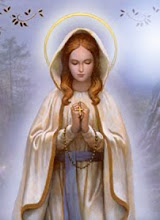
THE LITURGICAL CYCLES
GLENDA GIPSON:
The use of three liturgical cycles of Scripture readings for the Sunday liturgy throughout the universal Church is relatively new. In the 1960’s , the Second Vatican Council likened the bible to a fountain of renewal within the community of God’s people and directed that in the revision of liturgical celebrations there should be “more abundant, varied, and appropriate readings from sacred scripture.” The council further directed that at Mass “the treasures of the bible should be opened up more lavishly so that richer fare might be provided for the faithful at the table of God’s word.” In this way a more representative portion of sacred scripture will be read to the faithful over a three-year cycle of Sundays and holydays. These three are conveniently called “A”, “B”, and “C”. During Cycle A the primary Gospel is that of Matthew, Cycle B brings us most of Mark’s Gospel and Cycle C highlights the Gospel of Luke. Throughout each cycle selections from the Gospel of John are woven in at significant and appropriate times. The liturgical year begins with Advent, four Sundays before the feast of Christmas.
The structure of the readings is also such that the first reading was selected in accord with the theme or key idea of the Gospel. The Psalm – the Responsorial – is our response to the Word of God proclaimed, and the second reading helps us to understand the work of the early church communities through the letters of Paul and other leaders of the apostolic communities.
The weekday Cycles are named "1" and "2". Cycle 1 to be used during odd numbered years, and Cycle 2 in even numbered years. With the Sunday and weekday cycles, the majority of the bible would be read. There is also an annual cycle, the “Sanctoral Cycle” which commemorates the various saints and feasts that the Church continues to offer to us.
LOS CICLOS LITÚRGICOS
Escrito por Glenda Gipson y
traducido por Luz Henríquez
En la noche de la Última Cena, cuando Jesucristo instituyó la Eucaristía, Él le dijo a los apóstoles, "haced esto en memoria mía", pero no dio instrucciones, ni ningún plan sobre cómo se debía hacer esto. Así que los apóstoles usaron la única forma de culto que ellos conocían, la adoración del sábado. La única escritura escrita era la de las Escrituras Hebreas, por lo que la utilizaron junto con sus recuerdos de la vida de Jesús. Poco a poco la memoria oral se fue escribiendo y estos escritos fueron distribuidos con copias de las cartas de los apóstoles. Las cuáles fueron leídas durante los servicios de adoración. Como los apóstoles murieron, los obispos y sacerdotes se hicieron cargo de las reuniones del culto, pero la selección de las lecturas seguía siendo la opción del celebrante.
El uso de los tres ciclos litúrgicos, de las lecturas de la Escritura, para la liturgia del domingo en toda la Iglesia universal, es relativamente nuevo. En la década de 1960, el Concilio Vaticano II comparó la Biblia a una fuente de renovación dentro de la comunidad del pueblo de Dios y ordenó que en la revisión de las celebraciones litúrgicas debiera haber "más lecturas abundantes, variadas y adecuadas de la Sagrada Escritura." El consejo indicó además que en la Misa "los tesoros de la Biblia deben ser abiertos más generosamente para que sea más rica la participación para los fieles en la mesa de la Palabra de Dios." De esta manera, una parte más representativa de la Sagrada Escritura se lee a los fieles, en el transcurso de un ciclo de tres años de domingos y días festivos. Estos tres ciclos son convenientemente llamados "A", "B" y "C". Durante el ciclo A se enfoca primeramente del Evangelio según San Mateo, el Ciclo B nos lleva a la mayor parte del Evangelio de Marcos y en el Ciclo C se destaca el Evangelio de Lucas. Entre cada ciclo partes del Evangelio de Juan se seleccionan y entre tejen en momentos importantes y apropiados. El año litúrgico comienza con el Adviento, cuatro domingos antes de la fiesta de la Navidad.
La estructura de las lecturas es tal que la primera lectura se seleccionó de acuerdo con el tema o idea central del Evangelio. El Salmo - responsorial - es nuestra respuesta a la Palabra de Dios proclamada, y la segunda lectura nos ayuda a comprender el trabajo de las comunidades de la iglesia primitiva a través de las cartas de Pablo y otros líderes de las comunidades apostólicas.
Los ciclos de día de la semana se denominan "1" y "2". El ciclo 1 que se utiliza durante los años impares, y el ciclo 2 en los años pares. Con el domingo y los ciclos de día de la semana, se lee la mayoría de la Biblia. También hay un ciclo anual, el "Santoral", que conmemora a los santos y diversas fiestas que la Iglesia continua ofreciéndonos.
